|
BACKGROUND
1. WHAT IS AN ALLEGORY?
2. TYPES IN SCRIPTURE
3. LIFE IN THE TIME OF RUTH
4. THE JEWISH SOCIAL WELFARE SYSTEM
5. A KINSMAN-REDEEMER
.......THE KINSMAN-REDEEEMERS OBLIGATIONS
6. WHEAT AND BARLEY
.......BARLEY
.......WHEAT
.......THE HARVEST
.......THRESHING AND WINNOWING
The
full background to this teaching is available online at this link
Book of Ruth Background
|
Online links to scriptures (New International Version [NIV] unless otherwise stated) are shown in blue
| The first two sections have been retained for reference purposes during your study. You may prefer to directly scroll down to to the new teaching from Chapter 4. |
|
|
| THE PRINCIPAL CHARACTERS |
|
To understand today's application of this amazing 'story' we must appreciate who or what each of the principal characters represents. So it is here we need to start.
|
| BOAZ: A type of Jesus. |
|
 His name means, 'in him is strength'. Boaz was the 'Kinsman Redeemer' (restorer) of Naomi and Ruth. Jesus is our redeemer. His name means, 'in him is strength'. Boaz was the 'Kinsman Redeemer' (restorer) of Naomi and Ruth. Jesus is our redeemer.
Interestingly, the two pillars at the front of Solomon's Temple were named Jachin; 'He will establish' and Boaz; 'In Him there is strength.' Here we have the perfect picture of Jesus upon His return to reign in authority and power.
However He first came in weakness, as symbolized by the Tabernacle of Moses A perfect picture of us, today's believers, walking in the weakness of imperfection through the wilderness with Christ, as did the children of Israel so long ago. But He also overcame sin and death on the Calvary's cruel Cross, which we celebrate today, as typified by David's Tabernacle. While finally, the glory of the Temple pictures Christ's millennial reign! It was this final kingly reign that both the Jews, and many unbelievers today, expected Jesus to institute when He first came! The concept of a servant king to be imitated had and has much less appeal!
Galatians 3:13-14
|
| NAOMI: Type of the Jewish people and then the "Jewish church" |
|
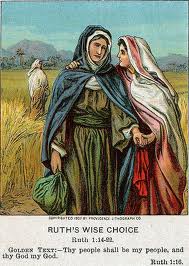 Naomi is a classic picture of a Jewish matriarch who, typical of women generally, is the power behind her husband's throne. But tragically, her husband, Elimelech (Meaning ' My God is King') dies. With extreme difficulty in the culture of the time, Naomi had to assume headship of the family. When things didn't go well, she cried out for her name to be changed from Naomi (my pleasantness) to Mara (bitter). But once the opportunity arises, her life quickly becomes focused on rectifying this situation through her daughter-in-law, Ruth. Naomi is a classic picture of a Jewish matriarch who, typical of women generally, is the power behind her husband's throne. But tragically, her husband, Elimelech (Meaning ' My God is King') dies. With extreme difficulty in the culture of the time, Naomi had to assume headship of the family. When things didn't go well, she cried out for her name to be changed from Naomi (my pleasantness) to Mara (bitter). But once the opportunity arises, her life quickly becomes focused on rectifying this situation through her daughter-in-law, Ruth.
|
| RUTH: Type of the gentile church. |
|
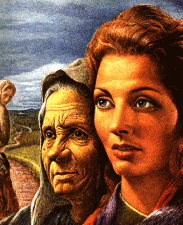 Ruth was a foreigner, from the land of Moab, (today's central Jordan) who was married to one of Naomi's two sons, Mahlon (puny, sick) or Chilion (pining, failing). Moab had a long history of conflict with the Jews, going back to the time when the Moabite King refused to let the Israelites pass through his land, shortly after their escape from a 400 year captivity in Egypt. This antagonism and conflict continued and intensified throughout the centuries that followed. Ruth, being a Moabitess was as 'unjewish' and as low as you could go in the Jewish societal structure of the day. So for her to return to Israel with her mother-in-law after the death of both their husbands, was a huge act of self-sacrifice. Ruth was a foreigner, from the land of Moab, (today's central Jordan) who was married to one of Naomi's two sons, Mahlon (puny, sick) or Chilion (pining, failing). Moab had a long history of conflict with the Jews, going back to the time when the Moabite King refused to let the Israelites pass through his land, shortly after their escape from a 400 year captivity in Egypt. This antagonism and conflict continued and intensified throughout the centuries that followed. Ruth, being a Moabitess was as 'unjewish' and as low as you could go in the Jewish societal structure of the day. So for her to return to Israel with her mother-in-law after the death of both their husbands, was a huge act of self-sacrifice.
|
| ORPAH: Type of the end time church that falls away. |
|
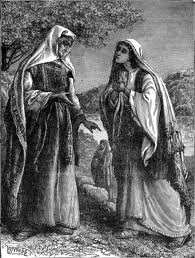 Orpah (back of the-neck, mane, stubborn) married Naomi's other son during the time the family spent in Moab, while escaping the drought in Israel. Orpah started on the journey back to Israel, but on the advice of Naomi, took the easy (and seemingly sensible!) option of returning to her family and remaining in Moab, in itself a type of 'the world'. Orpah (back of the-neck, mane, stubborn) married Naomi's other son during the time the family spent in Moab, while escaping the drought in Israel. Orpah started on the journey back to Israel, but on the advice of Naomi, took the easy (and seemingly sensible!) option of returning to her family and remaining in Moab, in itself a type of 'the world'.
|
| TO THE JEWS |
|
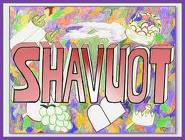 The story represents a picture of the transformation of Naomi from despair to happiness and cultural fulfilment, through the selfless acts of Boaz and Ruth. The story represents a picture of the transformation of Naomi from despair to happiness and cultural fulfilment, through the selfless acts of Boaz and Ruth.
This is well expressed in a Jewish description of the traditional reading of Ruth on the Feast of Shavout, or Pentecost, as Christians know it.
"Reading of the Book of Ruth: On the morning of Shavuot, we read the Book of Ruth, one of the "five scrolls". The book is the story of Ruth, a Moabite who chose to convert to Judaism, and was the great-grandmother of King David. There are many reasons for this custom. One has to do with the main character of the book, Ruth. Ruth was a convert, meaning she took upon herself the yoke of Jewish law. So too on Shavuot, as we celebrate the giving of the Law, we take upon ourselves a new the yoke of the Torah." (http://www.geeboosh.com/shavuot.htm)
|
| TO CHRISTIANS |
|
 A picture of Jesus (Boaz) and His care for His end time combined Gentile (Ruth) and Jewish (Naomi) Church. A picture of Jesus (Boaz) and His care for His end time combined Gentile (Ruth) and Jewish (Naomi) Church.
This amazing truth is revealed in a simple story, ironically in one of only two books in the Bible that has no mention of God. A story that took place nearly 3,000 years ago. A family tragedy, ending in a family restoration. Yet, this seemingly simple story contains Kingdom truths revealing God's plan for His church in these end times.
Let's look closer, shall we?
|
| UNDERLYING SPIRITUAL MEANING:
A PICTURE OF THE END TIME CHURCH |
|
|
| 4:1-4:10 A FREEWILL SACRIFICE |
|
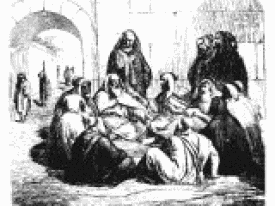 Boaz offers Ruth to another kinsmen-redeemer who decides that it is not in his self-interest to accept her. Boaz undertakes, with the elders as witnesses, to take Ruth as his wife, restoring Mahlon's (Ruth's first husband) family name amongst the town records. Boaz offers Ruth to another kinsmen-redeemer who decides that it is not in his self-interest to accept her. Boaz undertakes, with the elders as witnesses, to take Ruth as his wife, restoring Mahlon's (Ruth's first husband) family name amongst the town records.
Symbolically this reveals the freewill choice that Jesus made to die for our sins in order to re-establish our relationship with God the Father. It also illustrates the change from the 'Age of Law' as represented by the inflexibility and lack of compassion of the Kinsman Redeemer to the 'Age of Grace' of Jesus.
Ruth 4:1-10
|
| 4:11-4:12 ROYAL INHERITANCE ACCEPTED |
|
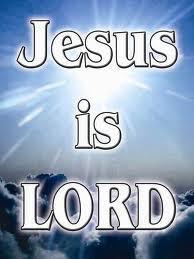 The elders give their blessing to the marriage, accepting Boaz and Ruth as members of their Jewish family, in the line of their "royal" inheritance. The elders give their blessing to the marriage, accepting Boaz and Ruth as members of their Jewish family, in the line of their "royal" inheritance.
Spiritually symbolic again of the acceptance of Jesus (Boaz) and the end time church (Ruth) as being the fulfilment of the Jewish inheritance.
Ruth 4:11-12
|
| 4:13-4:17 A UNIFIED CHURCH |
|
 The Lord enabled Ruth to conceive producing a son, and in doing so fully restoring Naomi to happiness and cultural fulfilment. The Lord enabled Ruth to conceive producing a son, and in doing so fully restoring Naomi to happiness and cultural fulfilment.
Symbolically illustrates the creation of a universal Jewish/Gentile church awaiting the return of Jesus, the fruit, the 'son' of the partnership. The timing of His return is dependent upon our preparedness for Him.
Ruth 4:13-17
|
| 4:18-4:22 THE FINAL REWARD |
|
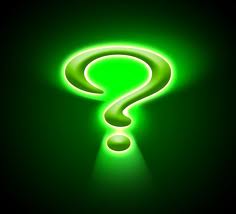 Here we have confirmed the establishment of the ancestry of Boaz and Ruth as being in the line of David. In time, this royal inheritance led to the birth of Jesus, who was of the same line. Here we have confirmed the establishment of the ancestry of Boaz and Ruth as being in the line of David. In time, this royal inheritance led to the birth of Jesus, who was of the same line.
Symbolically speaking of the return of Jesus to rule and reign as one with his perfect, holy, unified (in Him) church, a church consisting of both Jews and Gentiles totally sold out to Him. The date and the hour of this culmination of history ('His-story'), surely the true, heart desire of all committed believers, is simply dependent upon us. Are we prepared to make the necessary sacrifice, or will Jesus have to wait upon another generation? He is waiting upon us to respond to His call.
Ruth 4:18-22
|
| CONCLUSION |
|
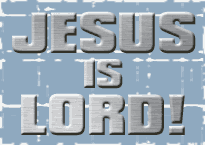 Let's reach out to Him now, seeking forgiveness for those times we have failed Him, by preferring our own comfort to embracing His will for us. To commit fully to being living examples of Jesus, impressing both Gentiles and Jews, so that we may become one, reaping the promised final harvest of souls for the Kingdom. And in doing so, be fully prepared for the greatest, most glorious day of all, that wonderful time when our Jesus returns to rule and reign in glory. Let's reach out to Him now, seeking forgiveness for those times we have failed Him, by preferring our own comfort to embracing His will for us. To commit fully to being living examples of Jesus, impressing both Gentiles and Jews, so that we may become one, reaping the promised final harvest of souls for the Kingdom. And in doing so, be fully prepared for the greatest, most glorious day of all, that wonderful time when our Jesus returns to rule and reign in glory.
|
| <i>NEXT WEEK:</i> THE CHARACTER OF GOD |
|
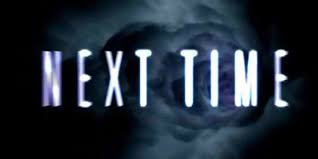 A unique revelation to help understand God more. A unique revelation to help understand God more.
|
| A NOTE FROM DAVID |
|
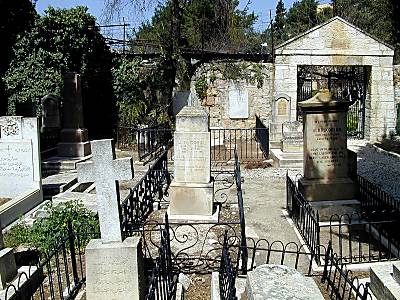 The allegory of the Book of Ruth is a powerful challenge and encouragement to us in our walk with Jesus. I trust it will motivate you to higher heights, as it has done to me. The allegory of the Book of Ruth is a powerful challenge and encouragement to us in our walk with Jesus. I trust it will motivate you to higher heights, as it has done to me.
IMAGES AND ART: Jerusalem
Mt. Zion
Also known as Mount Sion, the Upper City, the Southwestern Hill
Protestant Cemetery
In the backyard of the Bishop Gobat School (today Jerusalem University College) is the Protestant Cemetery where many notables of the 19th century are buried. The writer of the hymn "It Is Well With My Soul," Horatio G. Spafford, is buried in the far center of this photograph. Also buried in this cemetery are important archaeologists Sir Flinders Petrie and James Leslie Starkey.
|
So until next week.......
MAY GOD BLESS YOU AND YOU BLESS GOD!
His servant and yours
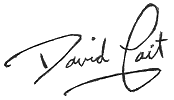
Learn more about us at...
www.wwj.org.nz/about.php
|
A DAVID'S DOODLING
To the believer Jesus is Savior, but to the disciple He is also Lord.
David Tait
|
Check
out the WWJ website for….
More David's Doodlings: www.wwj.org.nz/dd.php
Just jokes: http://www.wwj.org.nz/jokes.php
Waxing Lyrical: http://www.wwj.org.nz/waxing.php
If Only I'd Thought of it: http://www.wwj.org.nz/thought.php
Laughing at Ourselves: http://www.wwj.org.nz/laugh.php
|

 His name means, 'in him is strength'. Boaz was the 'Kinsman Redeemer' (restorer) of Naomi and Ruth. Jesus is our redeemer.
His name means, 'in him is strength'. Boaz was the 'Kinsman Redeemer' (restorer) of Naomi and Ruth. Jesus is our redeemer. Naomi is a classic picture of a Jewish matriarch who, typical of women generally, is the power behind her husband's throne. But tragically, her husband, Elimelech (Meaning ' My God is King') dies. With extreme difficulty in the culture of the time, Naomi had to assume headship of the family. When things didn't go well, she cried out for her name to be changed from Naomi (my pleasantness) to Mara (bitter). But once the opportunity arises, her life quickly becomes focused on rectifying this situation through her daughter-in-law, Ruth.
Naomi is a classic picture of a Jewish matriarch who, typical of women generally, is the power behind her husband's throne. But tragically, her husband, Elimelech (Meaning ' My God is King') dies. With extreme difficulty in the culture of the time, Naomi had to assume headship of the family. When things didn't go well, she cried out for her name to be changed from Naomi (my pleasantness) to Mara (bitter). But once the opportunity arises, her life quickly becomes focused on rectifying this situation through her daughter-in-law, Ruth.  Ruth was a foreigner, from the land of Moab, (today's central Jordan) who was married to one of Naomi's two sons, Mahlon (puny, sick) or Chilion (pining, failing). Moab had a long history of conflict with the Jews, going back to the time when the Moabite King refused to let the Israelites pass through his land, shortly after their escape from a 400 year captivity in Egypt. This antagonism and conflict continued and intensified throughout the centuries that followed. Ruth, being a Moabitess was as 'unjewish' and as low as you could go in the Jewish societal structure of the day. So for her to return to Israel with her mother-in-law after the death of both their husbands, was a huge act of self-sacrifice.
Ruth was a foreigner, from the land of Moab, (today's central Jordan) who was married to one of Naomi's two sons, Mahlon (puny, sick) or Chilion (pining, failing). Moab had a long history of conflict with the Jews, going back to the time when the Moabite King refused to let the Israelites pass through his land, shortly after their escape from a 400 year captivity in Egypt. This antagonism and conflict continued and intensified throughout the centuries that followed. Ruth, being a Moabitess was as 'unjewish' and as low as you could go in the Jewish societal structure of the day. So for her to return to Israel with her mother-in-law after the death of both their husbands, was a huge act of self-sacrifice.  Orpah (back of the-neck, mane, stubborn) married Naomi's other son during the time the family spent in Moab, while escaping the drought in Israel. Orpah started on the journey back to Israel, but on the advice of Naomi, took the easy (and seemingly sensible!) option of returning to her family and remaining in Moab, in itself a type of 'the world'.
Orpah (back of the-neck, mane, stubborn) married Naomi's other son during the time the family spent in Moab, while escaping the drought in Israel. Orpah started on the journey back to Israel, but on the advice of Naomi, took the easy (and seemingly sensible!) option of returning to her family and remaining in Moab, in itself a type of 'the world'.  The story represents a picture of the transformation of Naomi from despair to happiness and cultural fulfilment, through the selfless acts of Boaz and Ruth.
The story represents a picture of the transformation of Naomi from despair to happiness and cultural fulfilment, through the selfless acts of Boaz and Ruth. A picture of Jesus (Boaz) and His care for His end time combined Gentile (Ruth) and Jewish (Naomi) Church.
A picture of Jesus (Boaz) and His care for His end time combined Gentile (Ruth) and Jewish (Naomi) Church. Boaz offers Ruth to another kinsmen-redeemer who decides that it is not in his self-interest to accept her. Boaz undertakes, with the elders as witnesses, to take Ruth as his wife, restoring Mahlon's (Ruth's first husband) family name amongst the town records.
Boaz offers Ruth to another kinsmen-redeemer who decides that it is not in his self-interest to accept her. Boaz undertakes, with the elders as witnesses, to take Ruth as his wife, restoring Mahlon's (Ruth's first husband) family name amongst the town records. The elders give their blessing to the marriage, accepting Boaz and Ruth as members of their Jewish family, in the line of their "royal" inheritance.
The elders give their blessing to the marriage, accepting Boaz and Ruth as members of their Jewish family, in the line of their "royal" inheritance. The Lord enabled Ruth to conceive producing a son, and in doing so fully restoring Naomi to happiness and cultural fulfilment.
The Lord enabled Ruth to conceive producing a son, and in doing so fully restoring Naomi to happiness and cultural fulfilment. Here we have confirmed the establishment of the ancestry of Boaz and Ruth as being in the line of David. In time, this royal inheritance led to the birth of Jesus, who was of the same line.
Here we have confirmed the establishment of the ancestry of Boaz and Ruth as being in the line of David. In time, this royal inheritance led to the birth of Jesus, who was of the same line. Let's reach out to Him now, seeking forgiveness for those times we have failed Him, by preferring our own comfort to embracing His will for us. To commit fully to being living examples of Jesus, impressing both Gentiles and Jews, so that we may become one, reaping the promised final harvest of souls for the Kingdom. And in doing so, be fully prepared for the greatest, most glorious day of all, that wonderful time when our Jesus returns to rule and reign in glory.
Let's reach out to Him now, seeking forgiveness for those times we have failed Him, by preferring our own comfort to embracing His will for us. To commit fully to being living examples of Jesus, impressing both Gentiles and Jews, so that we may become one, reaping the promised final harvest of souls for the Kingdom. And in doing so, be fully prepared for the greatest, most glorious day of all, that wonderful time when our Jesus returns to rule and reign in glory.  A unique revelation to help understand God more.
A unique revelation to help understand God more.  The allegory of the Book of Ruth is a powerful challenge and encouragement to us in our walk with Jesus. I trust it will motivate you to higher heights, as it has done to me.
The allegory of the Book of Ruth is a powerful challenge and encouragement to us in our walk with Jesus. I trust it will motivate you to higher heights, as it has done to me.